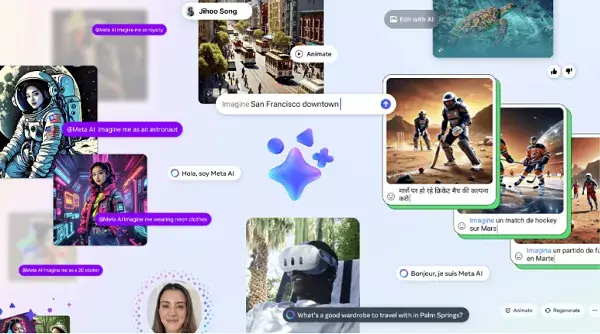Meta’s recent announcement of expanding its Meta AI chatbot to seven more languages and regions, including Argentina, Chile, Colombia, Ecuador, Mexico, Peru, and Cameroon, is a significant step forward in the company’s AI development plan. This move aims to make Meta AI more accessible to a broader audience, catering to diverse linguistic backgrounds. While this expansion is undoubtedly a positive development, it raises questions about the quality and effectiveness of Meta’s in-app chatbot.
The addition of seven new languages – French, German, Hindi, Hindi-Romanized Script, Italian, Portuguese, and Spanish – to Meta AI demonstrates the company’s commitment to enhancing user experience. However, the mixed reviews of Meta’s in-built AI bot cast doubt on its ability to deliver seamless interactions. Despite Meta CEO Mark Zuckerberg’s optimism about the bot becoming the most used AI assistant globally, questions linger about its actual popularity and utility versus mere ubiquity.
Apart from language expansion, Meta is introducing new creative functions to its chatbot, such as AI-generated images and customizable editing tools. The “Imagine me” feature allows users to visualize themselves as superheroes, rockstars, or athletes, mirroring Snapchat’s “Dreams” functionality. While these additions aim to make Meta AI more engaging and interactive, the long-term retention and impact of such novelty features remain uncertain.
One of the critical concerns with Meta’s integration of AI content into everyday user experiences is the potential dilution of the human element in social interactions. By encouraging users to rely on AI-generated content and prompts, Meta risks overshadowing the genuine social connections that platforms like Facebook, WhatsApp, and Instagram were initially designed to facilitate. The growing emphasis on AI tools and chatbots raises questions about the future direction of interactive communities and the balance between creativity and automation.
Meta’s introduction of the option for users to choose different AI models for specific tasks within the app signifies a shift towards more personalized and technical interactions. While this feature may offer advanced users more control over complex queries, its practical usability and widespread adoption are yet to be determined. The decision-making process behind selecting AI models and the associated technical nuances may deter casual users from fully leveraging this functionality.
The beta launch of Meta AI in VR for selected users in North America marks a significant step towards bridging the gap between AI technology and immersive experiences. By allowing hands-free control, real-time information access, and weather updates in virtual environments, Meta is tapping into the potential of AI in enhancing VR interactions. The prospect of creating VR experiences based on simple text prompts illustrates Meta’s ambitious vision for AI integration across diverse digital platforms.
While Meta’s current focus on expanding AI capabilities and introducing innovative features is aimed at shaping future user behaviors and habits, it also raises concerns about the balance between technological advancement and human connection. The evolution of Meta AI towards VR integration signals a broader shift towards more interactive and immersive digital experiences. However, the underlying implications of relying heavily on AI tools for communication and content creation warrant careful consideration regarding the long-term societal impacts and user engagement patterns.


Leave a Reply